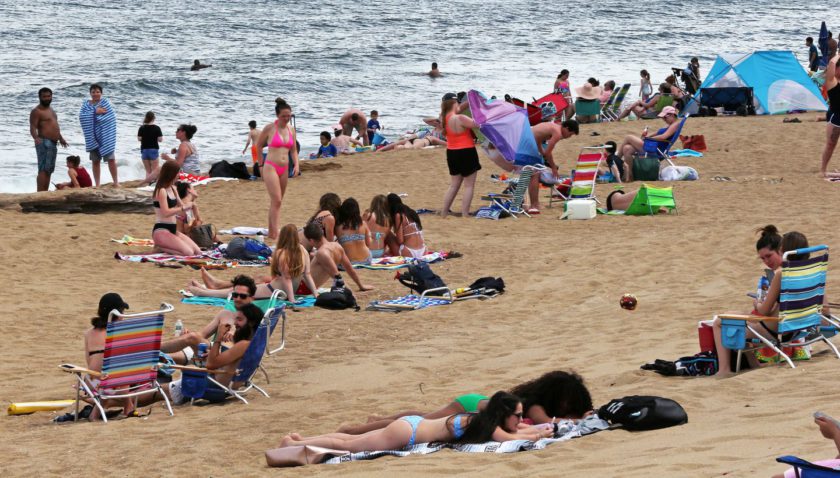A new bit of media spin concerns what can perhaps best be described as beach shaming. Here are some UK examples …
- Telegraph – Day-trippers urged to stay away as beaches become packed during heatwave
- BBC – Beach crowds descend on Bournemouth, Brighton and Poole
- Echo – Busy beaches in Bournemouth during heatwave
… and in the US …
- Chicago Tribune – ‘This has been our busiest year’: Crowded Lake County beaches struggle to maintain social distancing
- Boston Globe – At M Street Beach in Boston, it’s crowds and sun — and few masks and little social distancing
- etc…
What are the facts?
As has been pointed out by some, it’s a virus—not a moral agent geared to smite people who dare enjoy themselves. Six months in, we *know* most risk is indoors.
High Risk areas – Unventilated indoor crowded spaces, especially where people are talking or singing and there is no mask usage … parties, bars, clubs, etc…
Low Risk areas – Sunny windy Beaches and parks. Open air dilutes the virus, sunlight helps kill the virus, and people have room to social distance. Transmission is not impossible, but it is a lot safer than a visit to an indoor venue.
If the media truly wish to highlight a problem, then how about pictures of crowded bars. Hint: It’s a tad tricky to drink with a mask on. Did the guy serving you, and coming in contact with everybody else, wear gloves and a mask?
Do I have any skin in this game?
Nope, I’ve not been to a beach, but for those that do opt to go, it really is not the high risk activity being presented by some media stories.
An insight while talking to somebody who had been to the beach recently, is this. Yes some of those photos do indeed make the beach look very packed with folks shoulder to shoulder. However the reality is that it is generally not like that. Camera angles taken from a distance craft an illusion and so what you see is not the actual reality. He observed that shots taken from far away and at an angle makes it look jam packed, but when on the beach people were being sensible and where also social distancing.
That whooshing sound you can hear is the sound that common sense makes when it flies far over the heads of some, not all, journalists.
Facts and reliable information does truly matter.
Beach Shaming – Tweets
Julia Marcus, an infectious disease epidemiologist and assistant professor @harvardmed has a few observations …
